Art Beat: 'Residual Reboots' at UMD comments on state of arts studies
By the time this review sees print, a far too short exhibition of work by David R. Modler called “Residual Reboots and Recovered Defaults” at the Campus Gallery at UMASS Dartmouth will already be down.
Given the brevity of the show (only nine days as the gallery is closed on weekends), many potential visitors will have missed out on a rather brilliant commentary on the state of art education and the social dynamics that revolve around artmaking itself.
Modler, an Associate Professor of Art and Coordinator of Art Education and Chair of the Department of Contemporary Art and Theater at Shepherd University in Shepherdstown, West Virginia, was invited to exhibit by Samuel H. Peck, the Art Education Coordinator from UMD’s College of Visual and Performing Arts’s Department of Art Education, Art History & Media Studies.
The two are old friends who met more than fifteen years ago and bonded over a shared love of visual journaling and began doing sketches in a book that was mailed back and forth to each other, responding to and feeding off each other's entries.
That created a desire to expand beyond themselves and engage others to participate. They formed The tet(R)ad Project, an international artmaking project which has involved thousands of individuals of all ages and skill levels, fostering collaboration and community-based art journaling.
That collaborative energy was on display in a section of the gallery that was devoted to artistic interaction between Modler, Peck and students in the art education program, as well as anyone else in the community who had the opportunity and the want to jump in.
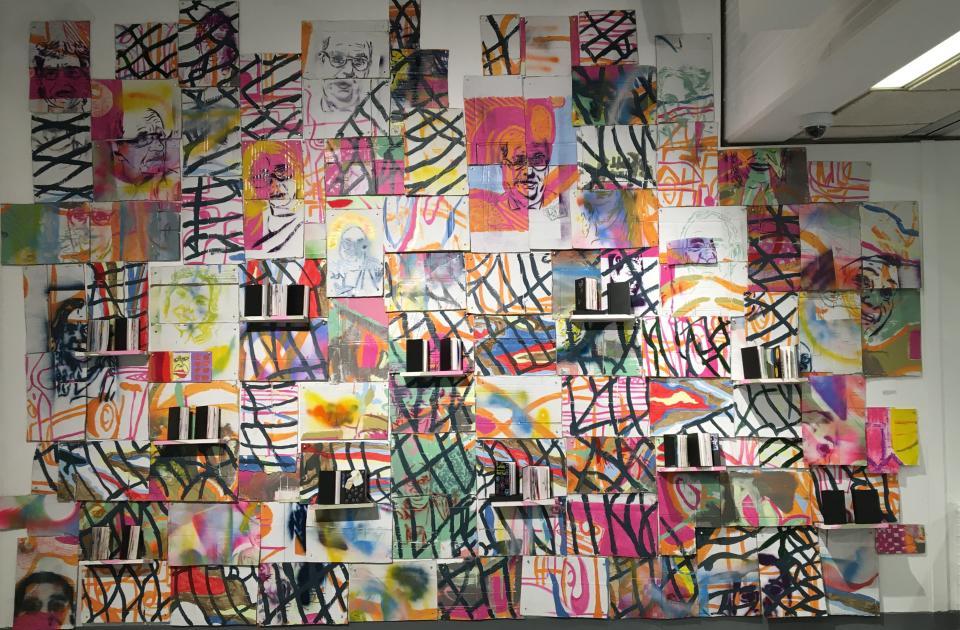
It was serendipitous that when I was visiting the gallery, Modler and Peck (who I had not previously met) came in and we had an opportunity to talk. I told them the initial skepticism that I had when I heard about the exhibition, which was described in part as both anonymous and democratic, was overcome. It did not come off, as I feared, as “art by committee” but rather a worthy gesture of exploration of community and cooperation.
Tables were set up where students had gathered and were paired off to work on a drawing together, only to be quickly stopped and reassigned to work with another participant and then another and then another, as if it were a strange creative version of speed dating.
The product of that process and others resulted in a wall of drawings and notes that interconnect and dissipate and regroup, creating unanticipated juxtapositions and commentary. It is ripe with youthful angst yet tempered with hope and possibility. And it’s a bit like the old surrealist drawing game of Exquisite Corpse — on steroids.
The bulk of the exhibition was of Modler’s own work, which included printmaking, acrylic painting, and image transfers.
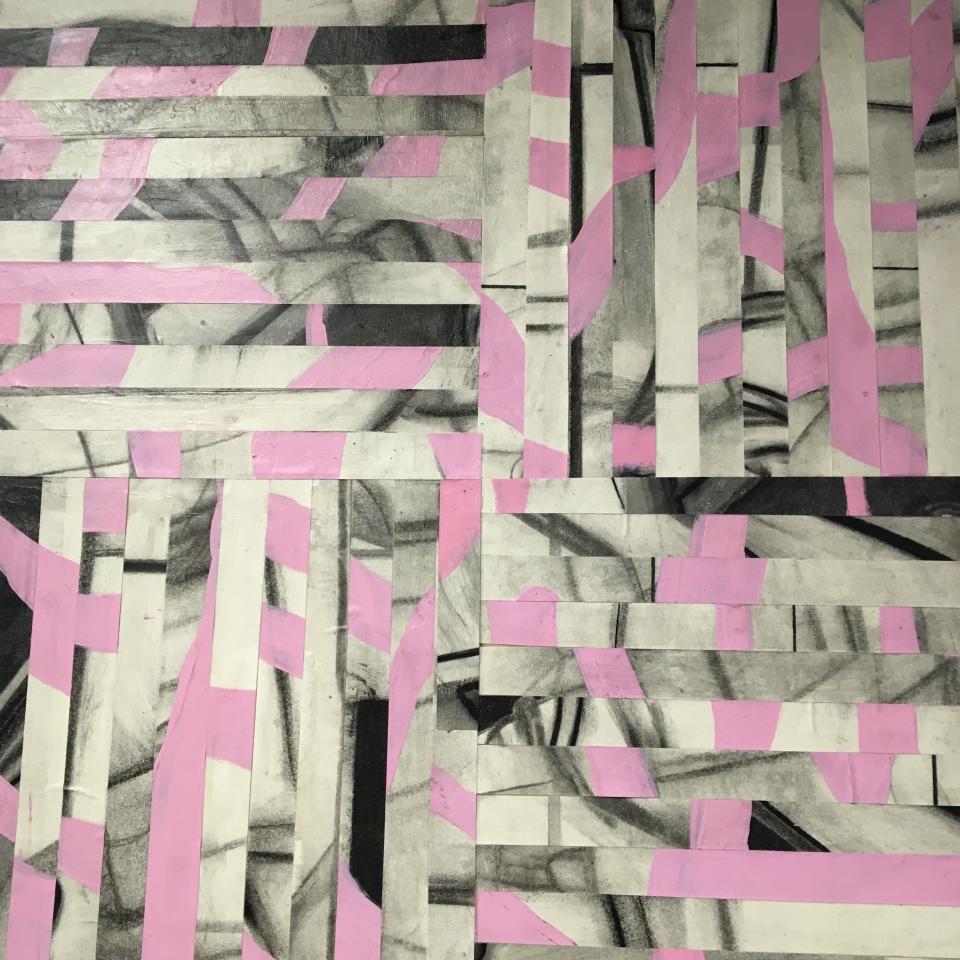
His “Residual Reboot #1” (and #2), featuring bands of pink acrylic paint and charcoal drawing, perhaps repurposed from earlier works, are calming, meditative purposeful abstractions. His “Things I Used to Know #1” (and #2) are collections of labyrinth-like black elements on white fields, which may or may not be obscuring something written below. Things he thought he knew? Or was proved wrong? Or forgot? The answer doesn’t matter. The mystery is its charm.
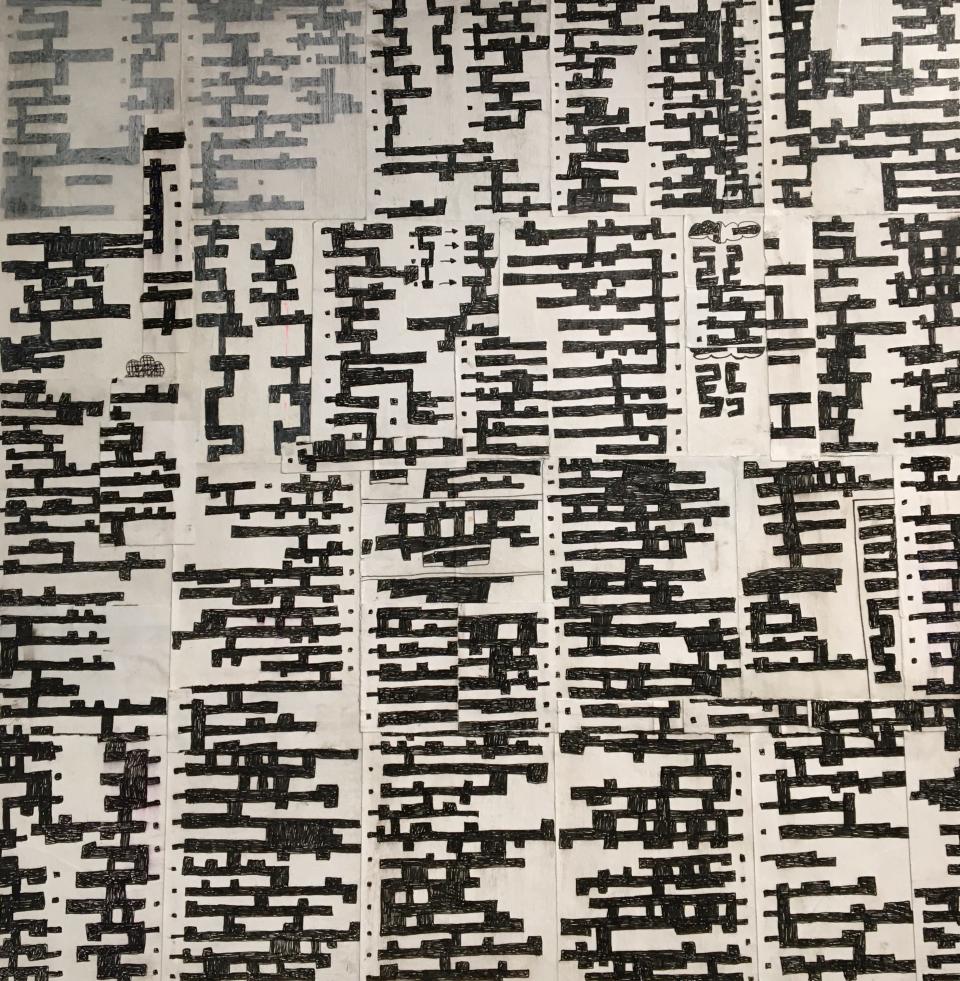
Scattered about on pedestals throughout the gallery are ten of Modler’s journals, each as big as a volume of the Encyclopedia Britannica and far funkier.
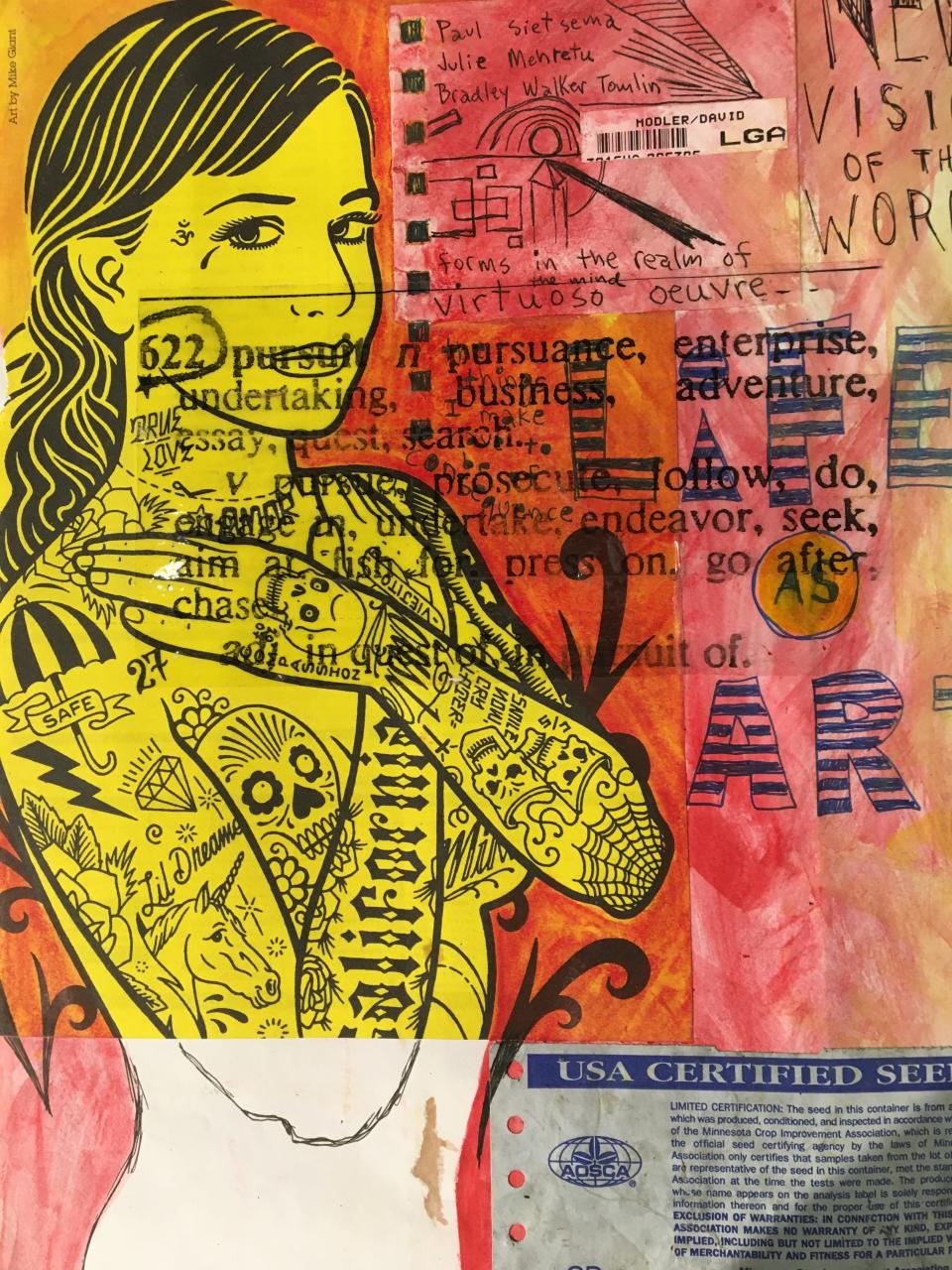
Produced over many years, each contains pages upon pages of drawings (pencil, ink, crayon), text, and collaged elements. Some pages are purposely torn, or cut through to reveal the pages below, or folded. And they are astonishing.
There are comic stips and one panel cartoons and road maps and business cards and beer bottle labels and parking garage permits and Laurie Anderson lyrics written with ballpoint and flattened film boxes and coffee cup sleeves and raffle tickets and thought balloons and expense records and rejection letters and postcards and lists — oh, so many lists — lists of favorite artists and chores and art supplies and names and addresses and telephone numbers and this run on sentence might offer some sense of how it feels to leaf through them, through the everything and nothing and something of life given form by art.
As I was talking to Modler and Peck, Jubril Agbaje, a first-year student from Nigeria, came into the gallery. He was visibly excited by the journals and asked who did them. Modler stepped up and shook his hand.
Agbaje said his parents wanted him to be an engineer. He said he knew that was not be his path and decided to go into animation and game art but he soon had a problematic realization. He said he didn’t know how to draw.
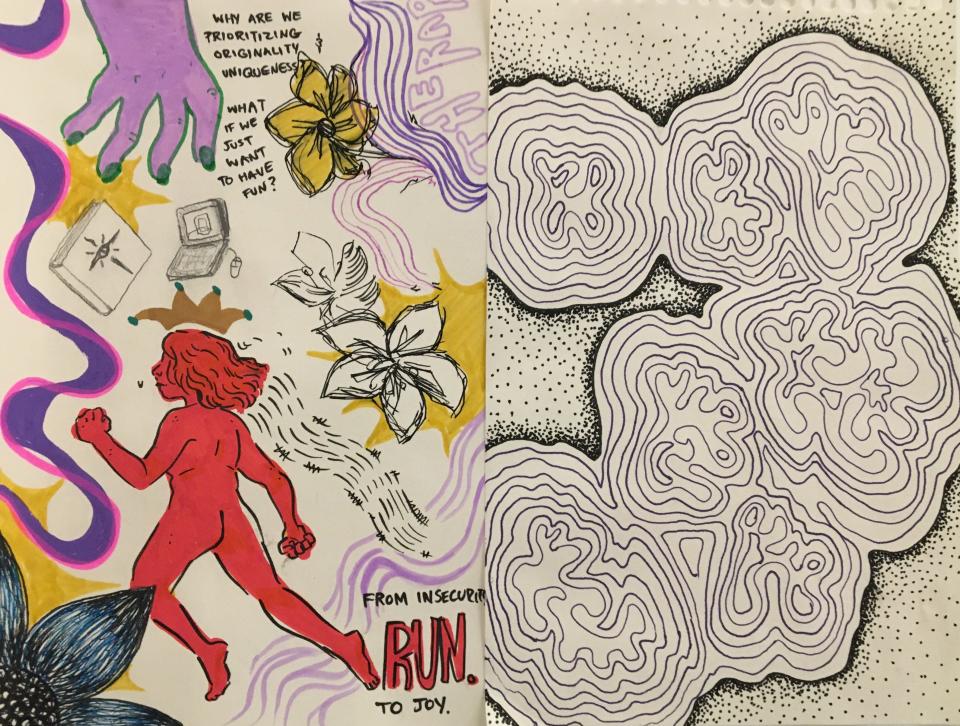
Modler gave him a sketchpad and said “Just draw. Take off that bracelet. Put it on the table. Draw it. The next day, get something off your desk. Draw it. And draw something else the next day.”
The kid smiled as if he’d been given the secrets of the universe.
And maybe he had.
You can check out the good work of Modler and Peck’s tet(R)ad Project at www.drawandplayhere.com.
This article originally appeared on The Herald News: Art Beat visits Residual Reboots and Recovered Defaults at UMD

